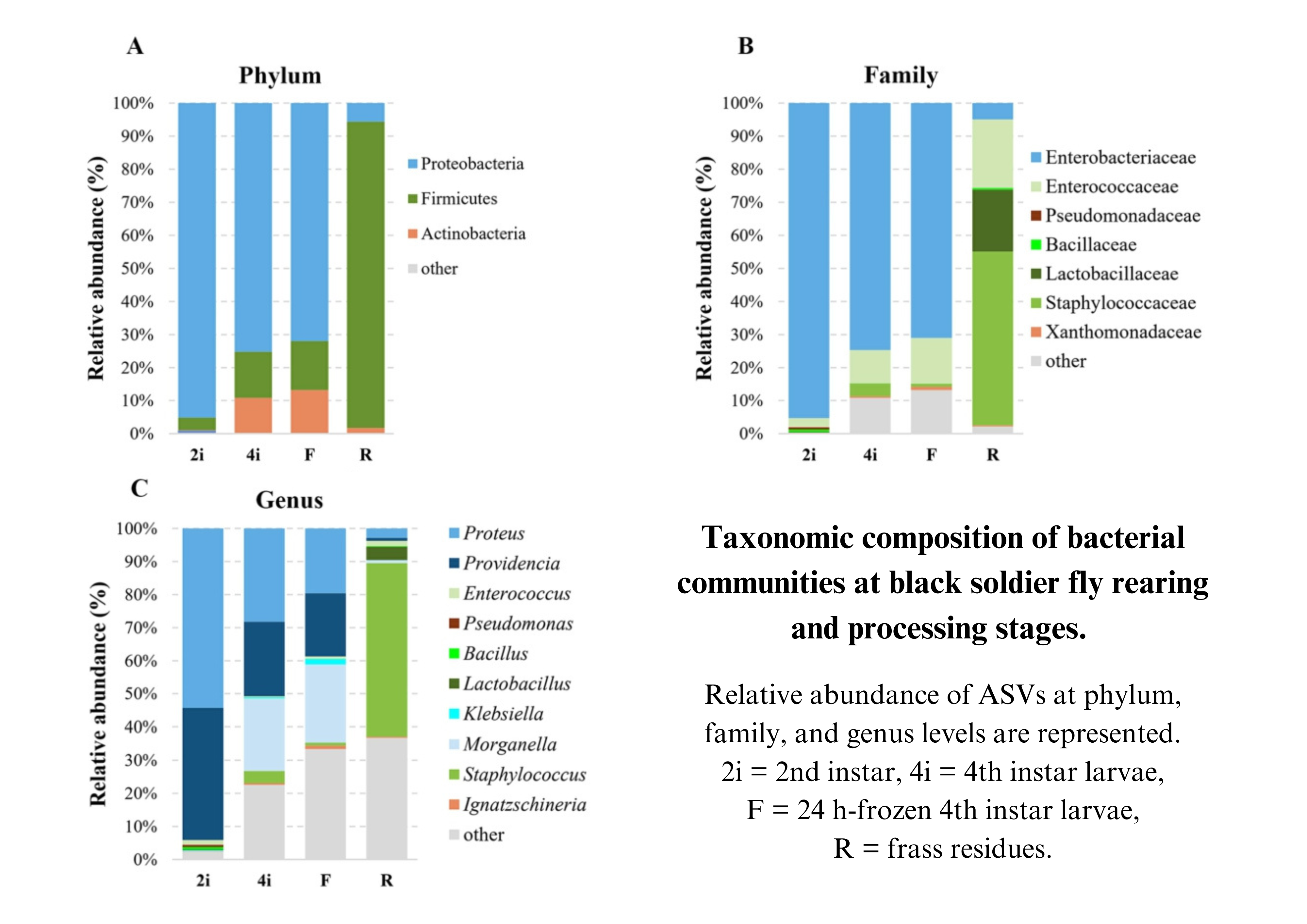The global problem of food waste is increasingly being tackled by using innovative solutions such as black solder flies (Hermetia illucens). They efficiently recycle food waste into valuable biomass, which is attracting sustainable companies to expand the industrial use of these insects worldwide. Little is known about the total microbiota of black solder fly larvae and its impact on the microbiological safety of food and feed. This study was carried out to determine the dynamics of the bacterial microbiota in the larvae and in the residues (usually used as fertilisers) after the larvae have been industrially reared. The effects of heat treatment, the number and identification of cultured bacteria and the prevalence of antibiotic resistance genes were assessed. Larvae at different stages of development, frozen and dried larvae and residue samples were analysed.
The composition of the total bacterial microbiota was similar in the samples, with Proteobacteria predominating, whereas Firmicutes predominated in the residues. The lowest diversity was found in larvae from earlier stages of development, while the highest diversity was found in residues. Samples showed low bacterial diversity. Culturable bacteria belonging to the genera Proteus, Providencia, Morganella, Staphylococcus, Klebsiella, Enterococcus and Bacillus were isolated. The number of culturable bacteria increased with larval growth. Dried larvae had the lowest number of viable bacteria and were dominated by spore-forming bacteria. The numbers of viable aerobic bacteria meet the microbiological safety criteria for edible insects. The tetracycline resistance gene tetM was the most abundant and was detected in all groups of samples tested. The highest diversity and frequency of antibiotic resistance genes were found in the residues.
The results of this work extend the limited knowledge of the dynamics of microorganisms and antibiotic resistance genes in industrial food waste processing using black solder fly larvae.

Funded by the Research Council of Lithuania (LMTLT), contract No S-PD-22-93.
Link to article: https://doi.org/10.1163/23524588-00001398
